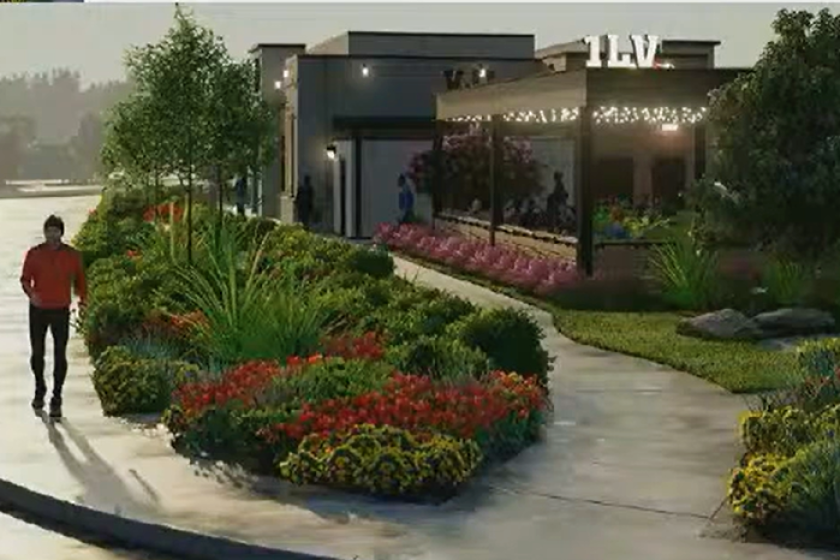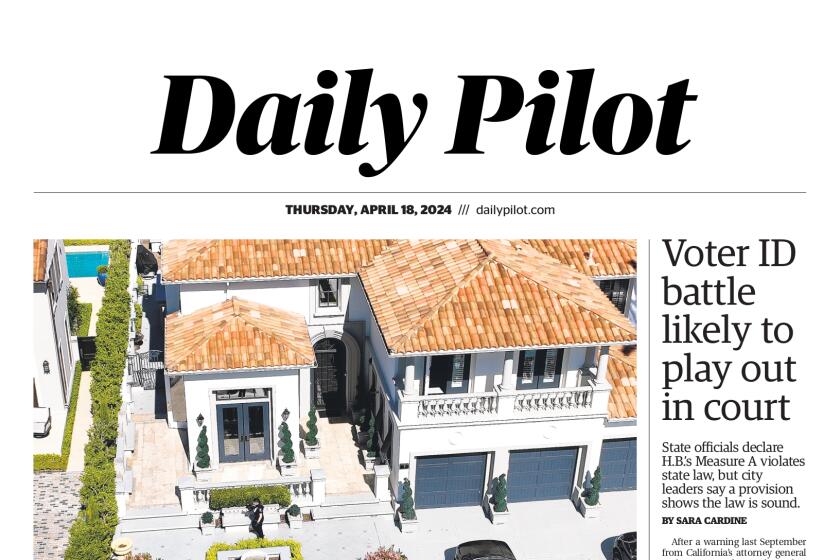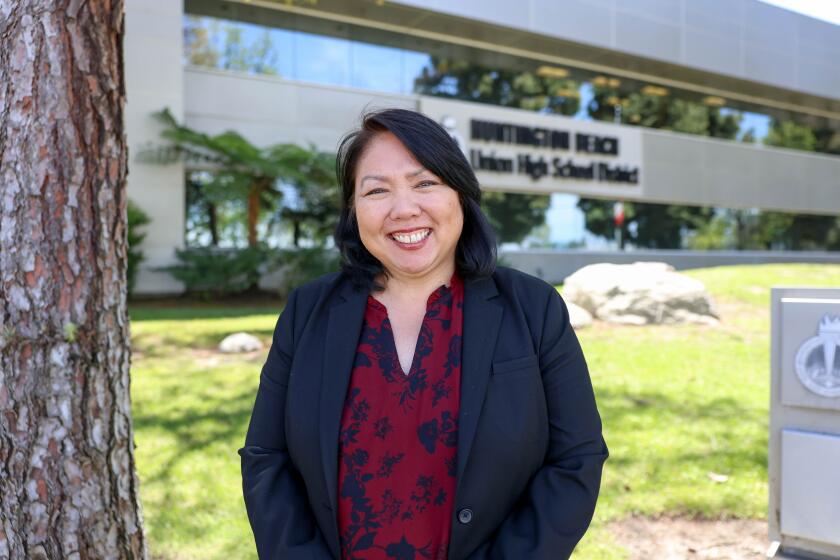Students at H.B. school see their science experiment launched to International Space Station
The tension was palpable in a Huntington Beach classroom as a clock ticked in the corner of a projection screen.
Speakers counted down the minutes, relaying to viewers the status of the unmanned Cygnus NG-11 cargo vessel preparing to launch Wednesday from the Mid-Atlantic Regional Spaceport in Virginia.
But even as the lights in the classroom were dimmed and the official countdown began, the students at Brethren Christian School — thousands of miles from Virginia — were less concerned about Cygnus’ flight than they were about the cargo it held.
Was their project going to work?
Would the data it collects prove their hypothesis?
There was no way to know for sure, even as their months-long project was launched into space toward the International Space Station. But Paige Coultrup, a sophomore and project manager, was optimistic.
“The hope is that [it’s] gonna work,” Paige said. “Even if it doesn’t work, we’re still gonna gather data so we can do it better in the future and gather more data. That’s the point of scientific experiments.”
Brethren Christian students plan to send a science experiment to the International Space Station »
Members of the engineering club at the private school have been working on the project since the beginning of the school year. Team members said they finished around January and shipped it for evaluation in February.
The experiment includes two tests. One is based on a crystal oscillator, which uses a vibrating crystal to create an electrical signal with an exact frequency. It will monitor that frequency to see how a clock is affected by the elements of space.
Additionally, the experiment will seek to re-prove Albert Einstein’s theory of relative time in space, comparing the performance of two identical clocks — one in space and one on Earth.
“We’re expecting the clock to come back to be younger,” Rick Peterson, a parent volunteer and team facilitator, said in December during the project preparation. “The time is going to be less on the clock coming back. It’s just a fraction of a second, but it’s large enough for us to measure with our equipment.”
Peterson said Wednesday that Cygnus is expected to arrive at the space station in about a week. Astronauts will execute the experiment and collect data while the project is in orbit for 30 days.
Data will be sent to the students about once a week. Their equipment will be returned to Earth on a cargo vessel.
Peterson’s son Colby, a junior and technical lead, said he was “mostly relieved” now that the project has been launched into space.
“The day before we finished [the project] and we shipped it, we did the final test and we’d all have on our mind-set, ‘What’s next? What’s next?’” Colby said. “And it was that moment when you realize, ‘We’re done. There’s nothing left to do.’ It feels really good.”
The team partnered with Quest for Space, a San Jose-based organization that trains students on how to create experiments to be tested aboard the space station. The program has launched more than 100 student-designed projects since it began in 2010.
This is the first year that Brethren Christian School has participated. Supt. John Moran said he has committed the school for another year.
“I’m so incredibly proud of [the students]. This is not just a fail-complete. It’s not that we have a program and we just start it,” Moran said. “Many schools don’t launch their first year … so for this tiny group … to overcome being the smallest of the groups and all the challenges that they had in the first year to have a successful launch of a successful experiment is really above and beyond what we could have asked or thought.”
All the latest on Orange County from Orange County.
Get our free TimesOC newsletter.
You may occasionally receive promotional content from the Daily Pilot.




